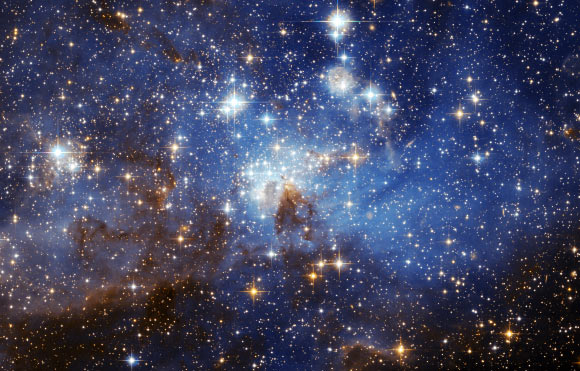
In the space around us, on Earth, in the Solar System and our Milky Way Galaxy, as similar objects get farther away, they look fainter and smaller. Their surface brightness, that is the brightness per unit area, remains constant.
In contrast, the Big Bang theory tells us that in an expanding Universe objects actually should appear fainter but bigger. Thus in this theory, the surface brightness decreases with the distance. In addition, the light is stretched as the Universe expanded, further dimming the light.
So in an expanding Universe the most distant galaxies should have hundreds of times dimmer surface brightness than similar nearby galaxies, making them actually undetectable with present-day telescopes.
But that is not what observations show, as demonstrated by this new study published in the International Journal of Modern Physics D.
The scientists carefully compared the size and brightness of about a thousand nearby and extremely distant galaxies. They chose the most luminous spiral galaxies for comparisons, matching the average luminosity of the near and far samples.
Contrary to the prediction of the Big Bang theory, they found that the surface brightnesses of the near and far galaxies are identical.
These results are consistent with what would be expected from ordinary geometry if the Universe was not expanding, and are in contradiction with the drastic dimming of surface brightness predicted by the expanding Universe hypothesis.
"Of course, you can hypothesize that galaxies were much smaller, and thus had hundreds of times greater intrinsic surface brightness in the past, and that, just by coincidence, the Big Bang dimming exactly cancels that greater brightness at all distances to produce the illusion of a constant brightness, but that would be a very big coincidence," Mr Lerner said.
That was not the only startling result of their research. In order to apply the surface brightness test, first proposed in 1930 by physicist Richard C. Tolman, the team had to determine the actual luminosity of the galaxies, so as to match near and far galaxies.
To do that, the astrophysicists had to link the distance to the galaxies with their redshift. They hypothesized that the distance is proportional to the redshift at all distances, as is well verified to be the case in the nearby Universe.
They checked this relation between redshift and distance with the data on supernova brightness that has been used to measure the hypothesized accelerated expansion of the Universe.
"It is amazing that the predictions of this simple formula are as good as the predictions of the expanding Universe theory, which include complex corrections for hypothetical dark matter and dark energy," said study co-author Dr Renato Falomo of the Osservatorio Astronomico di Padova, Italy.
Dr Riccardo Scarpa from the Instituto de Astrofısica de Canarias, Spain, who is a co-author of the study, added: "again you could take this to be merely coincidental, but it would be a second big coincidence."
Therefore if the Universe is not expanding, the redshift of light with increasing distance must be caused by some other phenomena - something that happens to the light itself as it travels through space.
"We are not speculating now as to what could cause the redshift of light," Mr Lerner said.
"However, such a redshift, which is not associated with expansion, could be observed with suitable spacecraft within our own Solar System in the future."
Reference:
Eric J. Lerner et al. UV surface brightness of galaxies from the local Universe to z ~ 5. Int. J. Mod. Phys. D, published online May 02, 2014; doi: 10.1142/S0218271814500588



See: [Link]